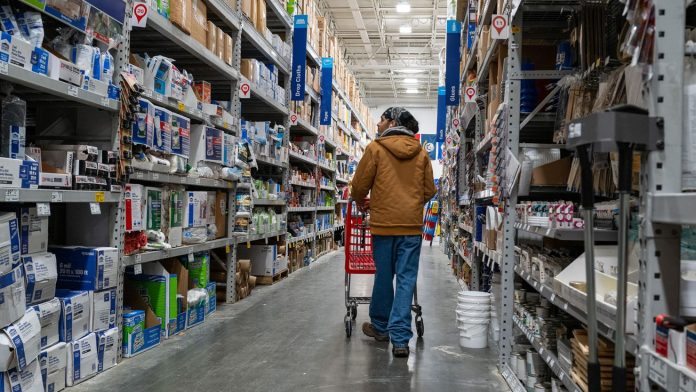How U.S. Consumer Spending Drives Economic Growth (Full Detailed Guide)
Consumer spending—also called personal consumption expenditure (PCE)—is the backbone of the U.S. economy. It accounts for about 65–70% of the total GDP, making it the single largest driver of economic activity. When Americans spend more on goods and services, the entire economic engine accelerates, from businesses and jobs to government revenue and national GDP growth.
In this detailed guide, you will understand why consumer spending is so powerful, what influences it, how it shapes the U.S. economy, and what happens when spending slows down.
1. What Is Consumer Spending in the U.S. Economy?
Consumer spending refers to all money spent by households on:
-
Durable goods (cars, appliances, electronics)
-
Non-durable goods (food, clothing, fuel)
-
Services (healthcare, transportation, entertainment, education)
This category forms the largest portion of GDP, so changes in consumer behavior immediately affect national economic performance.
Why it matters:
When consumers feel confident and financially stable, they spend more—leading to strong economic growth. When they are worried about inflation, job security, or recession, they cut spending, slowing growth.
2. Consumer Spending’s Role in GDP Growth
GDP Formula
GDP = Consumption + Investment + Government Spending + Net Exports
Here, consumption (C) is the biggest component.
How it boosts GDP
-
More spending → More production → Higher GDP
-
Higher demand → Businesses hire more workers → Household income increases
-
Rising wages → People spend more → Reinforces economic expansion
This cycle is known as the consumer-economic feedback loop.
3. How Consumer Spending Creates Jobs
When people spend more, businesses must increase production and services. This results in:
-
Hiring more employees
-
Raising wages to retain talent
-
Expanding operations
-
Opening new locations
Retail, restaurants, travel, healthcare, construction, entertainment, manufacturing, and tech all grow when consumer demand increases.
Studies show that 70% of new U.S. jobs depend directly or indirectly on consumer activity.
4. How It Influences Business Investment
Companies track consumer behavior closely. When spending rises:
-
Businesses invest in new equipment
-
Expand factories and warehouses
-
Invest in research & development
-
Increase marketing and product lines
This creates more jobs, more income, and more spending—fueling long-term economic expansion.
5. The Confidence Factor: How Emotions Shape the Economy
Consumer confidence surveys (like the University of Michigan Consumer Sentiment Index) are powerful economic predictors.
When confidence is high:
-
Americans spend more
-
Borrow more
-
Buy homes and cars
-
Travel, shop, and invest
When confidence drops:
-
Households save instead of spend
-
Big purchases are delayed
-
The economy slows
This emotional shift alone can trigger recessions or prevent them.
6. Impact of Inflation on Consumer Spending
Inflation significantly affects spending behavior.
Moderate inflation
→ Encourages spending because people buy now before prices rise further.
High inflation
→ Reduces real purchasing power
→ Households buy fewer goods
→ Demand falls
→ Businesses cut production
→ Economy slows
Inflation is one of the fastest ways consumer spending can weaken.
7. Role of Interest Rates
The Federal Reserve controls interest rates. These rates strongly influence:
-
Credit card spending
-
Auto loans
-
Mortgages
-
Business borrowing
When rates are low:
-
Loans become cheaper
-
Consumers spend more
-
Economy expands
When rates are high:
-
Borrowing becomes expensive
-
Consumers spend less
-
Housing and auto markets slow
-
GDP growth declines
This is why the Fed uses interest rates to manage economic stability.
8. Wage Growth and Employment Levels
Two major factors drive consumer demand:
1. Employment levels
High employment → More income → More spending
Unemployment → Less income → Reduced spending
2. Wage growth
If wages rise faster than inflation, consumers spend more.
In 2024–2025, wage growth is a major indicator of future GDP expansion.
9. How Government Policies Influence Spending
Government actions also impact consumer spending:
Tax cuts
→ Increase disposable income → Boost spending → Raise GDP
Stimulus checks / cash transfers
→ Immediate jump in demand
→ Quick economic acceleration
Social programs
→ Support lower-income households
→ Increase economic participation
Policies that put more money into people’s pockets typically raise GDP.
10. Technology and E-Commerce: New Drivers of Spending
Modern spending patterns have changed due to:
-
Online shopping
-
Mobile payments
-
Buy Now, Pay Later
-
Digital wallets
-
Streaming services
-
Gig economy
Amazon, Apple, Walmart, Uber, and Netflix collectively influence billions in consumer transactions.
E-commerce now makes up 15–18% of all U.S. retail spending, and rising.
11. Consumer Spending Cycles and Recessions
A reduction in consumer spending is one of the earliest warning signs of a recession.
When spending falls:
-
Businesses see lower demand
-
Companies reduce inventory
-
Hiring freezes or layoffs occur
-
Unemployment rises
-
Spending drops further
-
GDP contracts
This chain reaction clearly shows why strong consumer demand is essential.
12. How Consumer Debt Affects Spending
Americans rely heavily on:
-
Credit cards
-
Auto loans
-
Personal loans
-
Student loans
Healthy debt levels:
→ Encourage spending
→ Support economic growth
Excessive debt:
→ Reduces disposable income
→ Limits future spending
→ Slows GDP growth
Debt cycles directly affect business and government planning.
13. Why Consumer Spending Will Remain the U.S. Growth Engine in 2025–2030
Analysts expect consumer spending to remain strong due to:
-
Higher wage growth
-
Technological innovation
-
Millennials entering peak earning years
-
Continued population growth
-
Expansion of e-commerce
-
Rising homeownership demand
Even during economic slowdowns, the U.S. consumer remains the most powerful force in the global economy.
Conclusion: The U.S. Economy Runs on Consumer Spending
Consumer spending is not just an economic concept—it is the core engine driving:
-
GDP growth
-
Job creation
-
Business expansion
-
Wage increases
-
Innovation
-
Government revenue
When Americans spend, the entire economy grows. When spending falls, the economy slows. Understanding this relationship provides powerful insight into how the U.S. economy functions today and where it is heading in the future.



